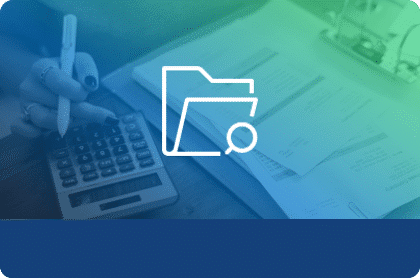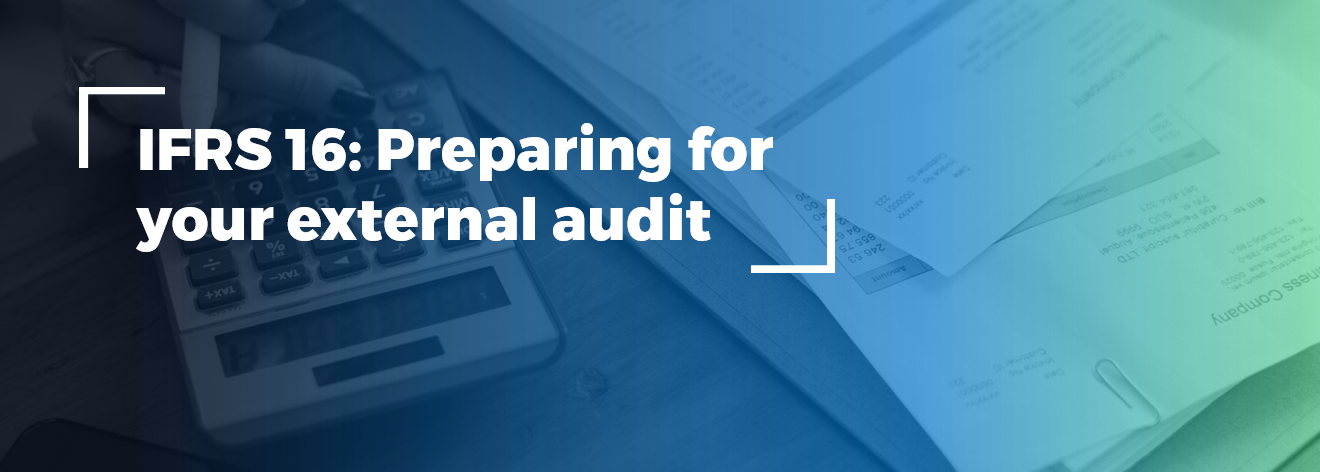IFRS 16 – Preparing for your external audit
Updated 26th May 2021 | 5 min read Published 17th October 2019


We are now into the final calendar quarter of 2019. If pertinent to your organisation, then the transition to and compliance with IFRS 16 will be complete or nearing completion.
You will have probably already published interim financial statements and these, of course, will have reflected the impact of IFRS 16 on your business with particular regard to certain financial metrics. Those parties with a real interest in your business – lenders, investors, stakeholders, suppliers – will undoubtedly be paying much attention to the disclosures that will have formed part of those interims as you followed the IAS 8 and IAS 34 guidelines regarding changes in accounting policies, processes and methods.
Building on this work you should now prepare for the annual audit of your financials by your appointed auditors who if all things were perfect in the world will have been kept abridged of every aspect of your adoption of IFRS 16 – from options to exemptions and from disclosures to elections.
All things are not always equal of course and at this time it is worth starting from the assumption that your auditors do not know your lease portfolio as well as you now do – one real positive spin-off of adopting IFRS 16 is that the business will have gained and documented a lot of previously unknown knowledge with regard to the leases it was committed to.
- quantitative disclosure to be accompanied by an informative and detailed explanation of the changes, tailored to the company’s specific circumstances;
- documentation, number and term of extant leases;
- clear explanations of the effect of transition, including a comparison of previous accounting policies with new policies;
- appropriate commentary on comparative amounts, where transitional arrangements may mean these are not directly comparable with current period amounts;
- any key judgments made by management in applying IFRS 16 to be clearly explained, such as including clarification of the exemptions they intend applying and the policy choices that they have made; and
- an explanation of how the transition has been implemented, after careful consideration of the transitional disclosure requirements under IFRS 16 and those requirements of IAS 8 referred to previously - ‘Accounting Policies, Changes in Accounting Estimates and Errors’.
- an explanation of any accounting policy changes which have taken effect with the adoption of IFRS 16, including whether exemptions will be applied (such as low-value or short-term exemptions).
- the transition approach, fully retrospective or simplified, which has been implemented, and which if any practical expedients will be applied.
- how have key judgements and estimates been made (such as assessing whether an arrangement contains a lease, determining the lease term, calculating the discount rate and whether any service/lease components of arrangements will be separated), and identifying lease portfolios for which IFRS 16 has a significant impact.
- preferably via impact modelling, a reliable estimate of the expected impact (restatement to assets, liabilities and retained earnings/opening retained earnings adjustment, or the change in assets, liabilities, income, expense on adoption, depending on transition approach).
- when utilising the simplified transition approach, a statement setting out any differences between the current operating lease commitment disclosure and IFRS 16 lease liability balances, and confirmation that lease liability comparative information has not been restated.
Realising just what you know will allow you to prepare for the arrival of the auditors and to enjoy an audit where the request for lease information, the supply of the necessary documentation and the associated delays are all mitigated.
Policies, Processes and Methods
We have discussed the requirements of IAS 8 and IAS 34 and as with any new standard, you will have had to develop policies and methods that weren’t in place before. If you didn’t involve your auditors and keep them availed of the changes then you will need to be prepared to provide them with clear documentation before the audit begins. It is safe to presume that your auditors will ask for clarification on these policies and you need to be in a position to explain them. Additionally, they will want to distinguish what internal controls have been put in place and what documentation surrounds them. Is there someone now responsible for lease management and is there someone who can describe just how your leases have been treated under the new standard and what changes have ensued – doubtless some service agreements will have now had the lease element identified and priced separately and vice versa some elements of a lease agreement will now be classified as service elements and treated in the accounts as such.
Lease Accounting Software
If you are a major user of leasing for asset finance and acquisition, then it is likely you have developed your own or implemented a third-party software solution to handle all aspects of your lease portfolio such as:
- Documentation
- Data capture
- Impact modelling
- Exemption adoption
- Expedient choices
- Amortisation
- Interest charges and rates
- General Ledger journals
- Termination notice generation
- Reporting
Armed with the processes you now have in place perform a test run of your reports and disclosures. Utilise an internal audit of your own to identify any gaps or issues and take time to address and resolve those prior to the arrival of your external auditors.
Finally, when you are satisfied that the policies and processes you have designed and developed pass muster then invite your auditors to utilise the software solution (assuming it is not a spreadsheet!) in performing their due diligence – they can access with just a little training data relating to the agreements, understand the journals generated and use the reports to sign off more quickly and with more confidence everything with regard to your reclassified lease portfolio not just this time but each year going forward – and they won’t be bothering you!.
Investing in purpose-developed software such as LOIS Lease Accounting (LLA) doesn’t just ensure that you’re compliant but helps achieve your audit with minimum intervention.
Call Innervision on 02072839422 or visit innervision.co.uk to avail yourself and your business of just what is available – your auditors may already be doing just that!
Disclaimer: this article contains general information about the new lease accounting standards only and should NOT be viewed in any way as professional advice or service. The Publisher will not be responsible for any losses or damages of any kind incurred by the reader whether directly or indirectly arising from the use of the information found within this article.





